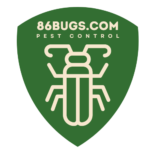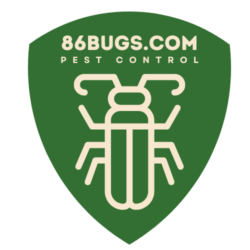Avian Nuisance Mitigation
Crows
Crows making a mess around your property? Get 86Bugs crow control and bird deterrent products to solve your crow issues. Easy to install, effective and affordable. Will not harm birds or other animals.
Crows can pose a major problem to property owners and growers. The black birds often gather in huge flocks, creating noise and leaving mounds of droppings in their wake. They damage roofs and their droppings can eat into and deface a variety of building and vehicle surfaces. American crows are protected by the Migratory Bird Treaty Act of 1918. The birds are widespread and very common, with their numbers estimated by BirdLife International to be around 31,000,000.
Information About Crows
Among the most intelligent of birds, the American crow can recognize individual people, pick a person out of a crowd, follow them, and remember them for years. Found across the U.S. and most of Canada, this black bird is typically about 17.5 inches long and weighs about 20 ounces. Crows often feed in open areas and will eat grains, small hard fruits, insects, carrion and whatever is available. They will travel as far as 40 miles from evening roost sites to daytime feeding areas.

Why Crow Control?
In cities and towns, crows are responsible for considerable damage to property and vehicles. Their sharp beaks peck the seals around sunroofs and windows and at the rubber on windshield wiper blades. They can also damage roofing tiles and shingles. In the country, crows damage seedling corn plants by pulling the sprouts and consuming the kernels. They sometimes damage ripening corn during the milk and dough stages of development. Crows may also damage ripening grain sorghum, commercial sunflowers, pecans, various fruits, and watermelons. Large fall and winter crow roosts can be disturbingly noisy and often leave huge amounts of droppings, creating health concerns. The birds can spread transmissible gastroenteritis (TGE) among swine facilities. Large flocks near wetland areas may spread waterfowl diseases such as avian cholera. Crow roosts that have been in place for several years may harbor the fungus (Histoplasma capsulatum) that causes histoplasmosis, a disease that can infect people who breathe in spores when a roost is disturbed.
How to Get Rid of Crows
There are several humane options for deterring crows from landing or nesting on your property. It’s important to thoroughly clean up any bird droppings or nesting materials before any deterrent products are installed (crows are attracted to the scent of their droppings and nests). Crows live in tight knit communities that work together to defend their territories. They may choose a high point on your home or building as a lookout point. Here are a few steps you can take to get rid of crows:
Crow Deterrents
- Keep crows off roof lines and ledges by installing Bird Spikes, Bird Jolt Flat Track or other physical bird deterrents to prevent them from landing.
- Keep crows off streetlights, A.C. units, signs and other areas with a Repeller 360°, Bird Spider or the Solar Bird Repeller.
Scare Crows Away
Crows are highly intelligent and will post lookouts to alert the flock for any perceived threats, so scare tactics can be highly effective.
- Create a visual distraction zone by hanging Visual Deterrents with reflective surfaces to scare crows away
- Sound deterrents alert crows of nearby danger by broadcasting predator calls, distress calls and crow noises to making them want to flee the area.
Remove Food Sources
- Crows may be attracted to your property, so remove any bird feeders to limit this attraction.
- Remove leftover food on the floor and tables of open-air eateries. Tightly close all trash containers.
- Discourage the feeding of crows by children or employees.
Humane Bird Removal/Professional Installer
If you don’t have the time, resources or expertise to solve your crow problem, several wildlife and pest control companies offer bird control as a service. These professionals can install bird control products and offer other services such as clean-up and humane trap and crow removal.















